
Back in the 1990s, most people wouldn’t have believed that soon, everyone from elementary school children to grandparents would be walking around with a hand-held device that serves as a computer, mobile phone, and camera. Cell phones have rapidly shaped modern society, and other advanced technology has the potential to change our lives dramatically. (Here are the most useful appliances invented in the last 100 years.)
Some seemingly modern luxuries, however, have been around for longer than you’d think. Central heating, indoor plumbing, and automatic doors, for example, were all invented over 2000 years ago. Ancient civilizations around the world, from Central and South America, to the Mediterranean, to China had bustling urban centers where innovation was necessary to help society run smoothly.
24/7 Tempo has compiled 25 ancient inventions you thought were modern by reviewing numerous articles and archaeological reports to determine the first incarnation of inventions that are still commonly used today. Many of these inventions were originally used by the elite and royalty, only becoming more commonplace with time.
A few of the inventions were planned on paper but likely never made it to implementation in their creator’s lifetime, while others — such as perfume and toothpaste — have been used ever since, with their base formulas remaining remarkably similar to the originals. (Some technologies, on the other hand, quickly sink into obsolescence. Here are modern inventions we really don’t use any more.)
Click here to see ancient inventions you thought were modern

Perfume
> When: 2000 B.C.
Numerous ancient cultures used perfumes, including the Egyptians, Chinese, Arabs, and Hindus. In 2003, archaeologists on Cyprus discovered the oldest known perfume factory, which dates back over 4,000 years. The 43,000 square foot distilling factory contained stills, perfume bottles, funnels, and mixing vessels. Analysis of the pottery remnants uncovered 14 plant extracts, including pine, coriander, bergamot, anise, bay, and bitter almond.
[in-text-ad]

Odometer
> When: 15 B.C.
Odometers, which measure the distance traveled by a vehicle, used to be mechanical. A Roman architect and engineer, Vitruvius, is often credited with inventing the odometer in 15 B.C. What he designed was a large wheel in a small frame that dropped a pebble into a container at each complete revolution, giving an account of the distance traveled.

Central heating
> When: 350 B.C.
The Greeks developed a central heating system called hypocaust — which translates to “under burnt” — that created radiant floor heat. The oldest evidence of its use is in the Temple of Artemis at Ephesus. The system included pipes built under the floors and in walls that circulated heat from a constantly tended fire under the building. Multiple levels of a structure could be heated with this system.

Pancakes
> When: Stone Age
Although ancient Greeks and Romans are documented to have eaten fried griddle cakes sweetened with honey, there is some evidence that pancakes date back to the Stone Age. Analysis on 30,000-year-old stone tools shows that people were grinding flour out of cattails and ferns. Experts suggest that the flour was likely mixed with water and baked on a hot rock.
[in-text-ad-2]

Indoor plumbing
> When: 2800 B.C.
The Indus Valley Civilization in modern-day Pakistan is likely the first society to have used indoor plumbing. Many households contained toilets, with wastewater being directed into drains that led to street-level municipal sewers. Toilets and copper-piped sewage systems have also been found in Egypt, with some tombs containing bathrooms for the dead to utilize in the afterlife.

Door lock
> When: 2000 B.C.
The oldest known door lock was discovered in the ruins of a palace near Nineveh, the ancient capital of the Assyrian Empire in Mesopotamia. The lock mechanism consisted of a wooden bolt with several holes in it that was used to secure the door, and a series of wooden pegs that filled the holes, preventing the bolt from being pulled out. This was the precursor to a type of lock known as a pin tumbler, which was common in ancient Egypt.
[in-text-ad]
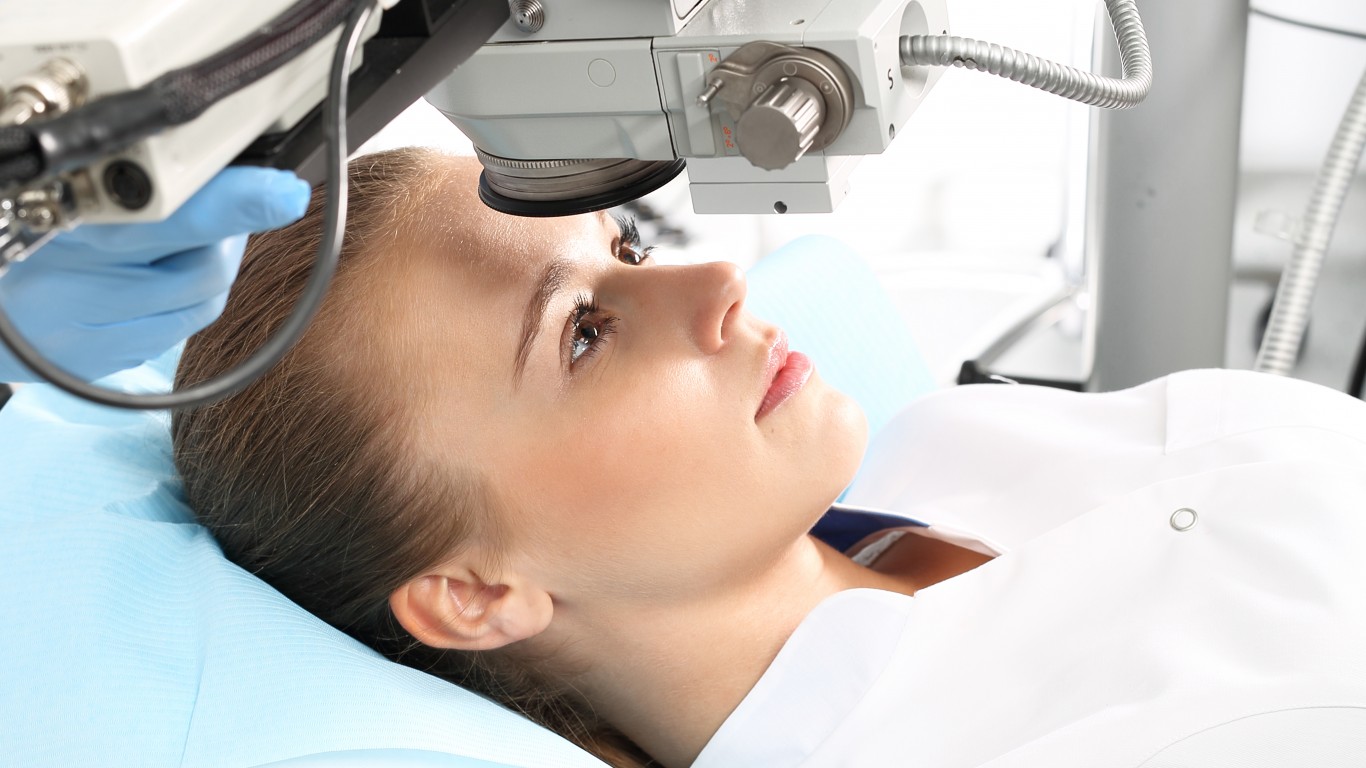
Cataract surgery
> When: 5th century B.C.
Although cataract surgery has been depicted in ancient Egyptian art and mentioned in Babylonian texts, the first known method of successfully treating cataracts dates back to 5th century B.C. India. Known as couching, the treatment involved dislodging the cataract with a curved needle and pushing it to the side, which restored limited but unfocused vision to those who were near blindness.

Eye makeup
> When: 4000 B.C.
The earliest known remnants of eye makeup have been found in archaeological sites dating to predynastic Egypt.These remnants consist of malachite (a copper-based green mineral) and galena (a lead-based black mineral). The use of black and green makeup around the eyes became common in Egyptian upper classes, and galena eye shadow eventually came to be known as kohl in Arabic.
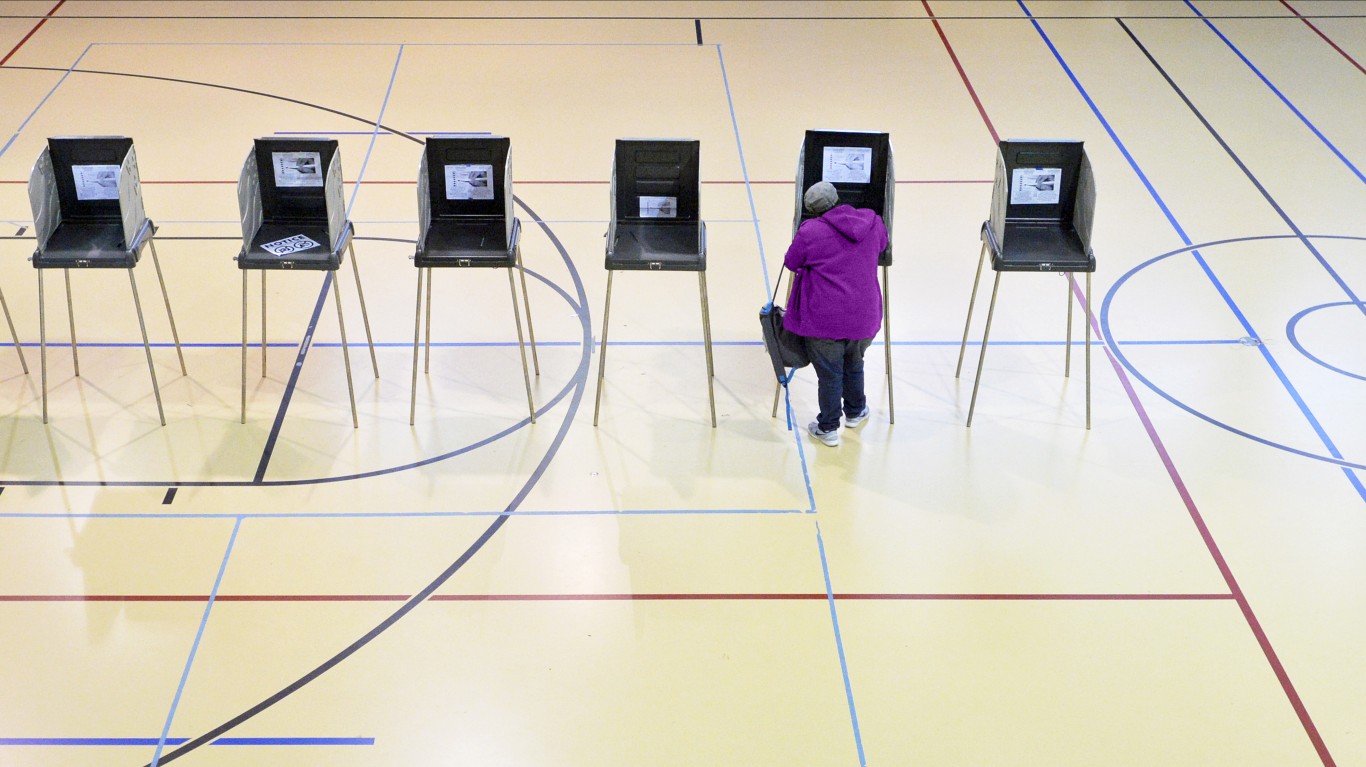
Democracy
> When: 507 B.C.
Often considered a defining feature of modern life, the concept of democracy as we know it dates back to ancient Greece, where the Athenian leader Cleisthenes implemented a governmental system called “demokratia,” or “rule by the people.” Demokratia consisted of three separate governing institutions: one that wrote laws, one that represented each of the Athenian tribes, and one that arbitrated civilian cases.
[in-text-ad-2]
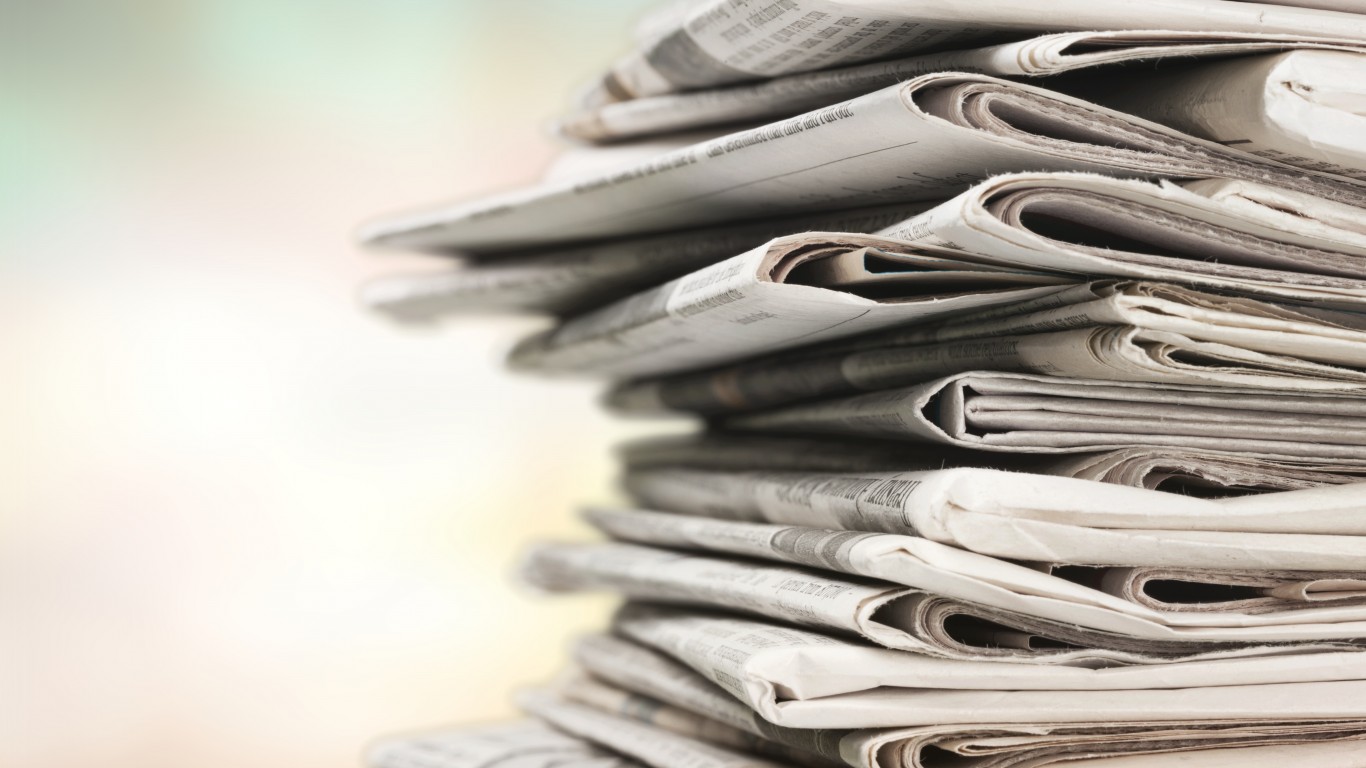
Newspaper
> When: 131 B.C.
The Acta Diurna, which translates to “daily acts” was a series of Roman public notices that were carved into stone or metal and posted daily in prominent places beginning in 131 B.C. Eventually, the format moved to handwritten notices on papyrus, making them the first newspaper in the world. Covered topics included legal decisions, military victories, grain prices, and notable deaths and births.

Chocolate
> When: 3300 B.C.
This beloved confection synonymous with sweetness started its life as a bitter beverage. Although the origins of chocolate have long been traced to Central America as far back as 4,000 years ago, recent archeological evidence from Ecuador shows that Theobroma cacao seeds were used by the Mayo-Chinchipe people over a thousand years earlier than in Mesoamerica — likely in the preparation of ritual beverages.
[in-text-ad]

Automatic doors
> When: 1 A.D.
Although he likely never implemented them, Greek mathematician Heron of Alexandria designed a set of automatic doors that used a pneumatic pulley system powered by heat from a fire and weighted with buckets of water.

Vending machine
> When: 62 A.D.
Another of Heron’s inventions is considered to be the first vending machine, designed to dispense holy water to worshipers. The device consisted of a tray with a coin slot. When a coin was inserted, the tray would tip from the weight of the coin, and that opened a valve that dispensed the water. A counterweight would then right the tray, which would shut off the valve.

Robot
> When: 60 A.D.
Although the creation of the first programmable robot is often credited to American inventor George Devol, who created a digitally operated robot in 1954, Heron of Alexandria may have beat him to it with his programmable automaton. Using steam power with weights, ropes, and an axle, Heron’s robot could change direction and move along a programmed course.
[in-text-ad-2]
Crane
> When: 6th century B.C.
Grooves found in stone structures in Greece suggest that Ancient Greeks used cranes to lift massive stones while building temples. The cranes would have consisted of a set of tongs attached to a rope and were powered by either humans or donkeys. Eventually, pulley systems made these cranes more efficient.

Umbrella
> When: 4th century B.C.
Although the parasol was invented over 4,000 years ago in Egypt as a way to block the sun, the Chinese were the first to waterproof their silk and paper parasols with wax or lacquer for use against the rain. Eventually, oilpaper was used as a cheaper alternative. Remnants of the first collapsible umbrellas have been found in China, dating back to the 6th century B.C.
[in-text-ad]

Earthquake detector
> When: 132 A.D.
Chinese astronomer and mathematician Chang Heng created the first earthquake detector, which consisted of eight ornate metal dragons mounted around a cylinder, each with a bronze ball in its mouth. When a slight tremor struck, a ball would fall out of one of the dragons’ mouths into a waiting receptacle. The direction of the tremor could be judged based on which dragon had released its ball.

Armored car
> When: 1487 A.D.
Italian inventor Leonardo da Vinci designed what is considered to be the prototype of the modern tank. His armored vehicle used a conical wooden shield reinforced with metal plates, as well as two large internal cranks that would have taken four people to power. A series of cannons would protrude from the interior of the vehicle.
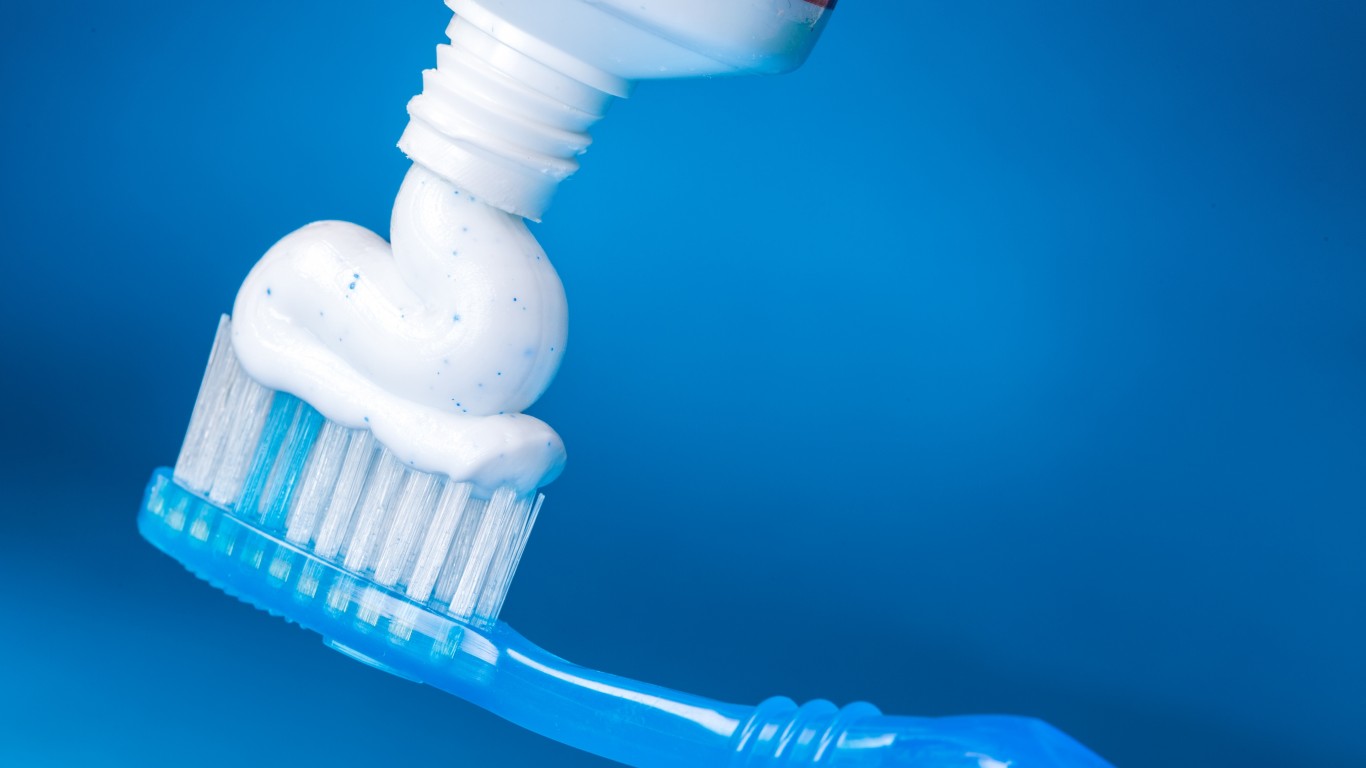
Toothpaste
> When: 5000 B.C.
Ancient Egyptians were serious about their personal hygiene. Toothpaste is thought to have been used in Egypt as far back as 5000 B.C., but the oldest recorded recipe for toothpaste comes from a papyrus dating back to the 4th century A.D. The paste included rock salt, mint, iris flowers, and black pepper.
[in-text-ad-2]

Trigonometry
> When: 1800 B.C.
Trigonometry, the branch of mathematics that deals with relationships between side lengths and angles of triangles, is thought to have been developed by the Greeks in the 3rd century B.C., but evidence from a 3,700 year old Babylonian tablet suggests that it may have been developed much earlier. The clay block, inscribed with cuneiform numbers and right triangles, appears to contain a version of mathematics that echoes Pythagorean theorem.

Lighthouse
> When: 5th century B.C.
The first documented lighthouse was established by Athenian general Themistocles, in the harbor of the port city Piraeus. The lighthouse consisted of a column of stone with a fire burning at the peak. Another Greek lighthouse at Sigeion in modern-day Turkey may have been the first that was regularly lit in order to guide ships.
[in-text-ad]

Clock tower
> When: 50 B.C.
The Athenian Horologium, also called the Tower of the Winds, is an octagonal building erected around 50 B.C. as a timepiece. Each side faces a cardinal or ordinal direction, and the tower originally contained a sundial, a water clock for telling the time in the dark, and a weathervane.

Steam engine
> When: 100 A.D.
Called an “aeolipile,” or “wind ball,” and considered to be a useless toy, the first working steam engine was designed by Heron of Alexandria. The invention consisted of a covered water cauldron that, when heated, would send steam into a hollow sphere then into two bent exhaust pipes, causing the rotation of the sphere.

Thermometer
> When: 1st century A.D.
The Jewish Philosopher Philo is credited with inventing the first thermometer, which was a tube attached to a hollow sphere, placed over a basin of water that would displace as the sphere heated or cooled. Around the same time, Heron of Alexandria attempted to quantify temperature with a similar device that could be used in medicine.
[in-text-ad-2]

Rocket
> When: 10th century A.D.
The Chinese began using gunpowder to propel arrows during the Song Dynasty. These rockets consisted of rolled paper tubes that were packed with gunpowder and attached to arrows. Although these early rockets were launched by bows, the technology was eventually refined so that the rockets could propel themselves.
It’s Your Money, Your Future—Own It (sponsor)
Retirement can be daunting, but it doesn’t need to be.
Imagine having an expert in your corner to help you with your financial goals. Someone to help you determine if you’re ahead, behind, or right on track. With SmartAsset, that’s not just a dream—it’s reality. This free tool connects you with pre-screened financial advisors who work in your best interests. It’s quick, it’s easy, so take the leap today and start planning smarter!
Don’t waste another minute; get started right here and help your retirement dreams become a retirement reality.
Thank you for reading! Have some feedback for us?
Contact the 24/7 Wall St. editorial team.
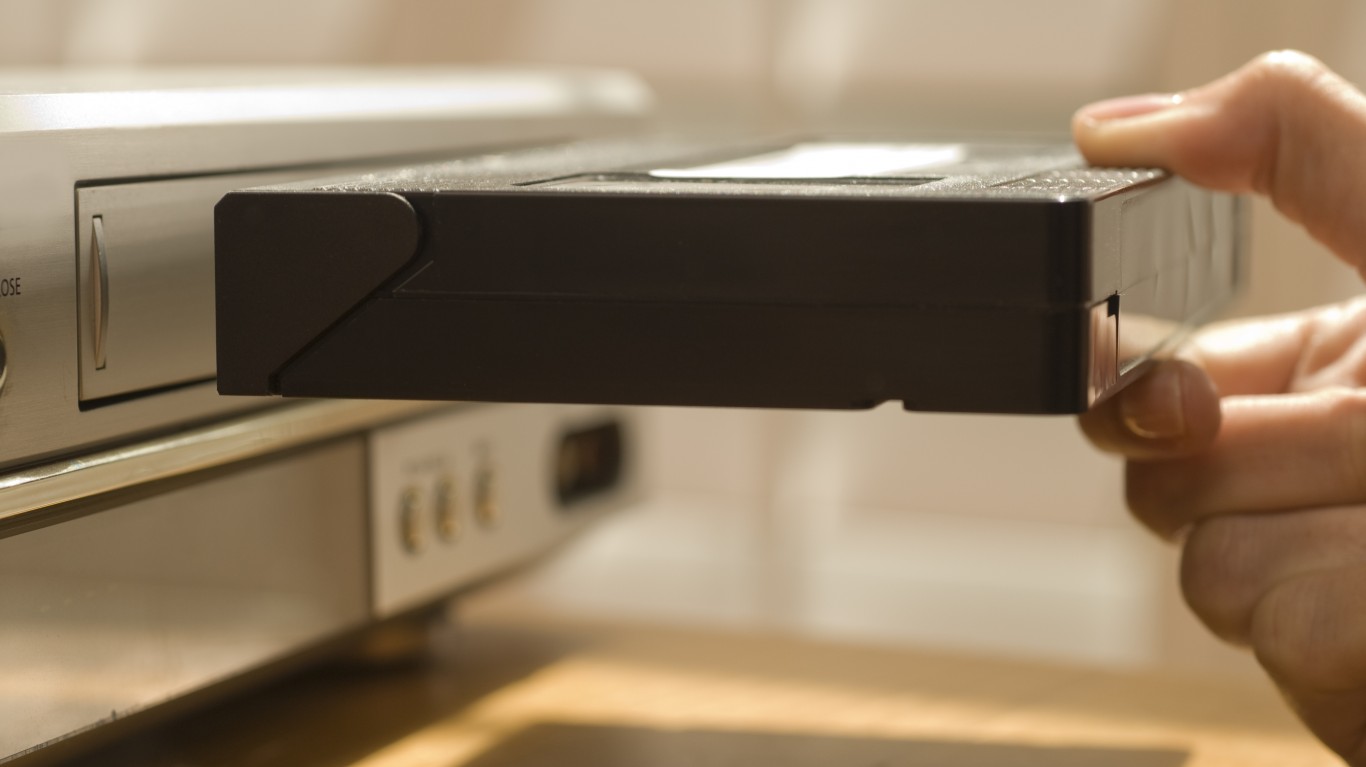 24/7 Wall St.
24/7 Wall St.
 24/7 Wall St.
24/7 Wall St. 24/7 Wall St.
24/7 Wall St.